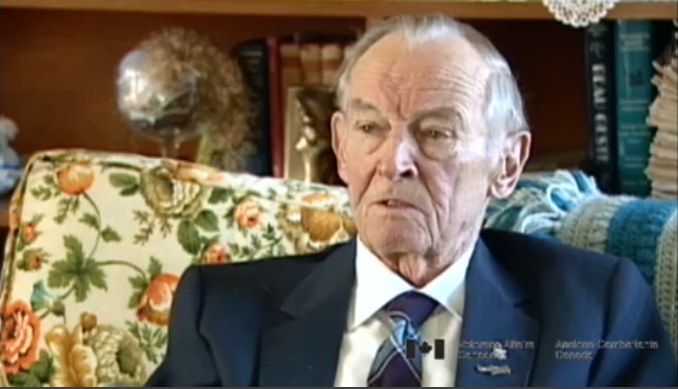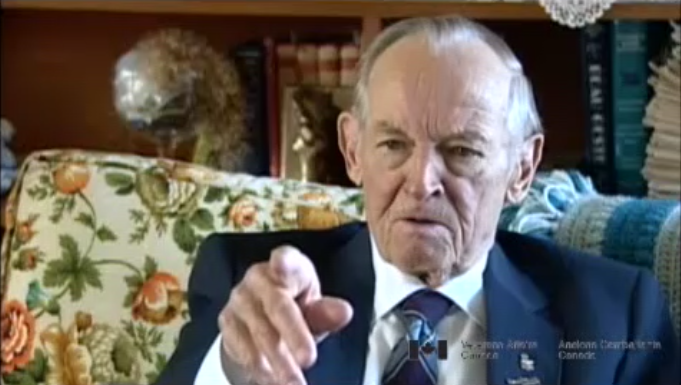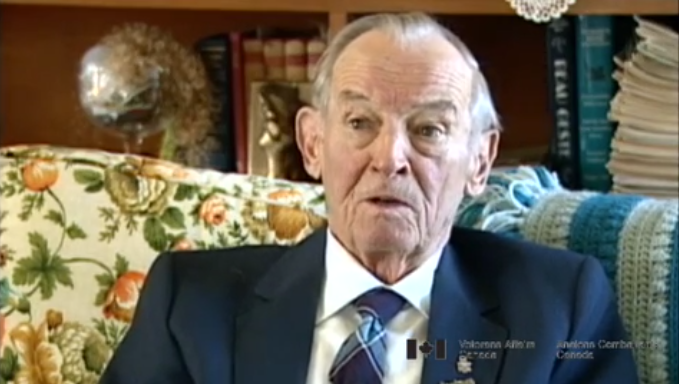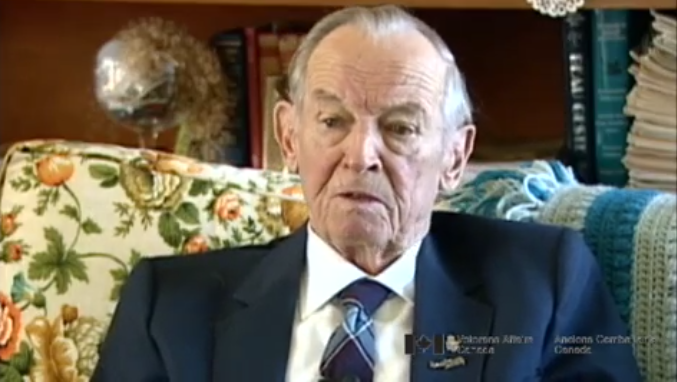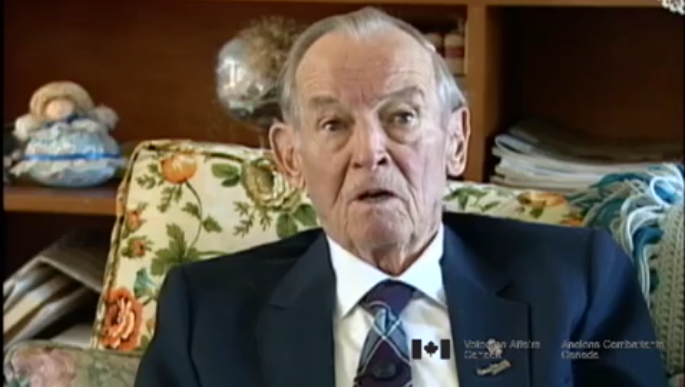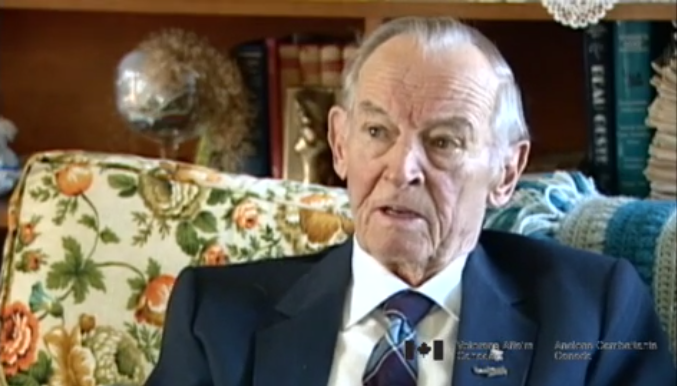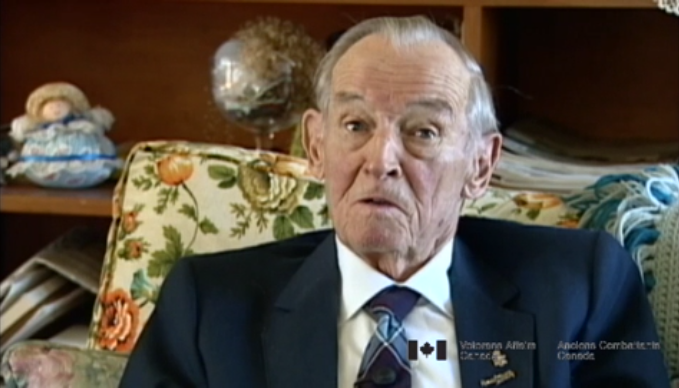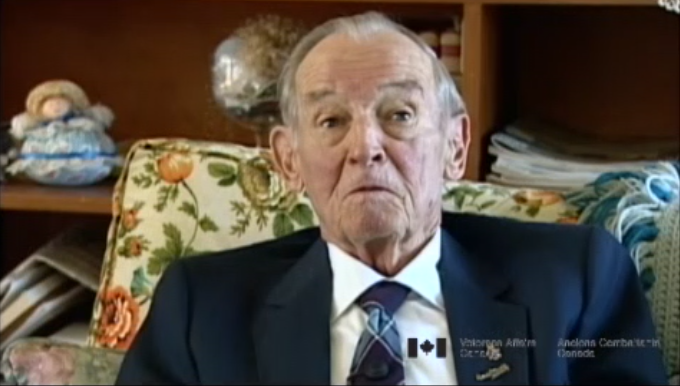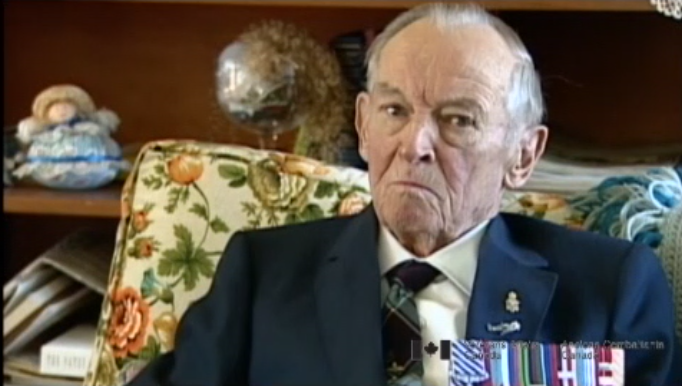Wartime Instructor
Heroes Remember
Wartime Instructor
Transcript
Description
Mr. Ireland discusses his role as a flight instructor, handling the recruits, and teaching newly adopted air to ground attack tactics.
Elgin Gerald Ireland
Elgin Gerald Ireland was born in Shelbourne, Ontario, on January 12, 1921. He was the eldest in a family of seven. Because his father was a farmer, his family survived the depression in relative comfort. Mr. Ireland lived close to an airfield, and was fascinated by the thought of flying. When the family farm was sold, Mr. Ireland felt no obligation to stay home, and in April, 1941, enlisted in the Royal Canadian Air Force. He was groomed as a pilot, and did his elementary training at St. Eugene, flying the Fleet Finch. He moved on to St. Hubert, learned to fly the Harvard aircraft, and then moved on to Trenton where he was a flight instructor for one and a half years. Mr. Ireland reached England as a member of a Hurricane squadron, but soon transferred to 411 Spitfire Squadron. He flew air to ground combat at Falaise Gap and Nijmegen, while at the same time engaging the Luftwaffe in air to air warfare. For his efforts, he received the Distinguished Flying Cross and the Netherlands Flying Cross. After the liberation of Europe, Mr. Ireland volunteered for the Tiger Force, an air group which was to aid in the war against Japan. Mr. Ireland remained in the air force, returning to the Trenton Flying School. He was one Canada’s first pilots to fly the Vampire, F-86 Sabre, and CF-100 jet fighters. After spending four years as Canada’s CF-100 Squadron Commander in France, he returned to 409 Squadron at Comox, British Columbia, where he was promoted to Camp Commander. It was at that point that British Columbia became his family home.
Meta Data
- Medium:
- Video
- Owner:
- Veterans Affairs Canada
- Duration:
- 4:16
- Person Interviewed:
- Elgin Gerald Ireland
- War, Conflict or Mission:
- Second World War
- Branch:
- Air Force
- Rank:
- Flight Lieutenant
Related Videos
- Date modified:



